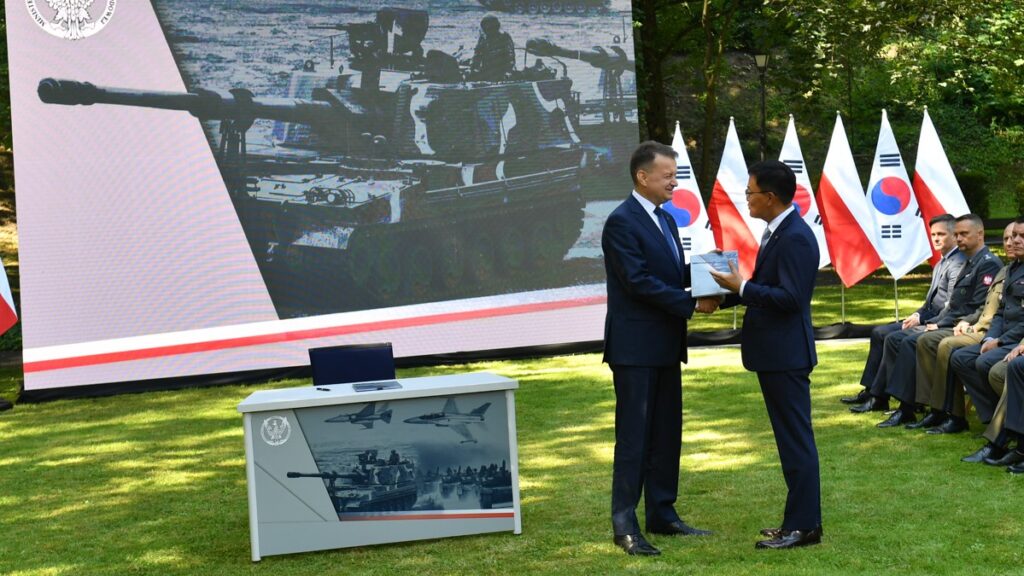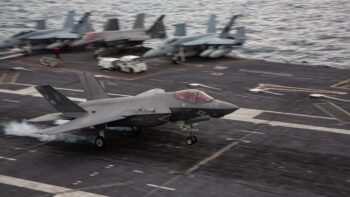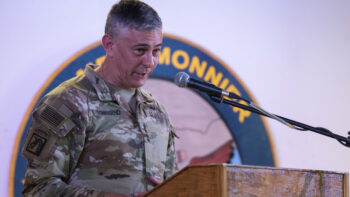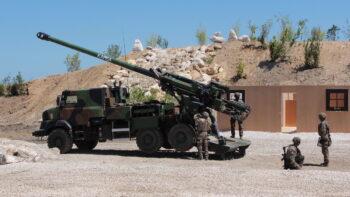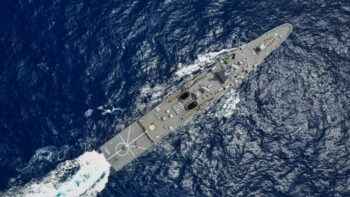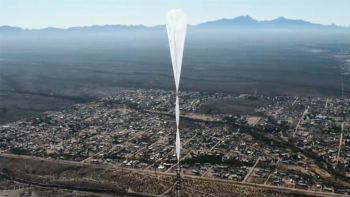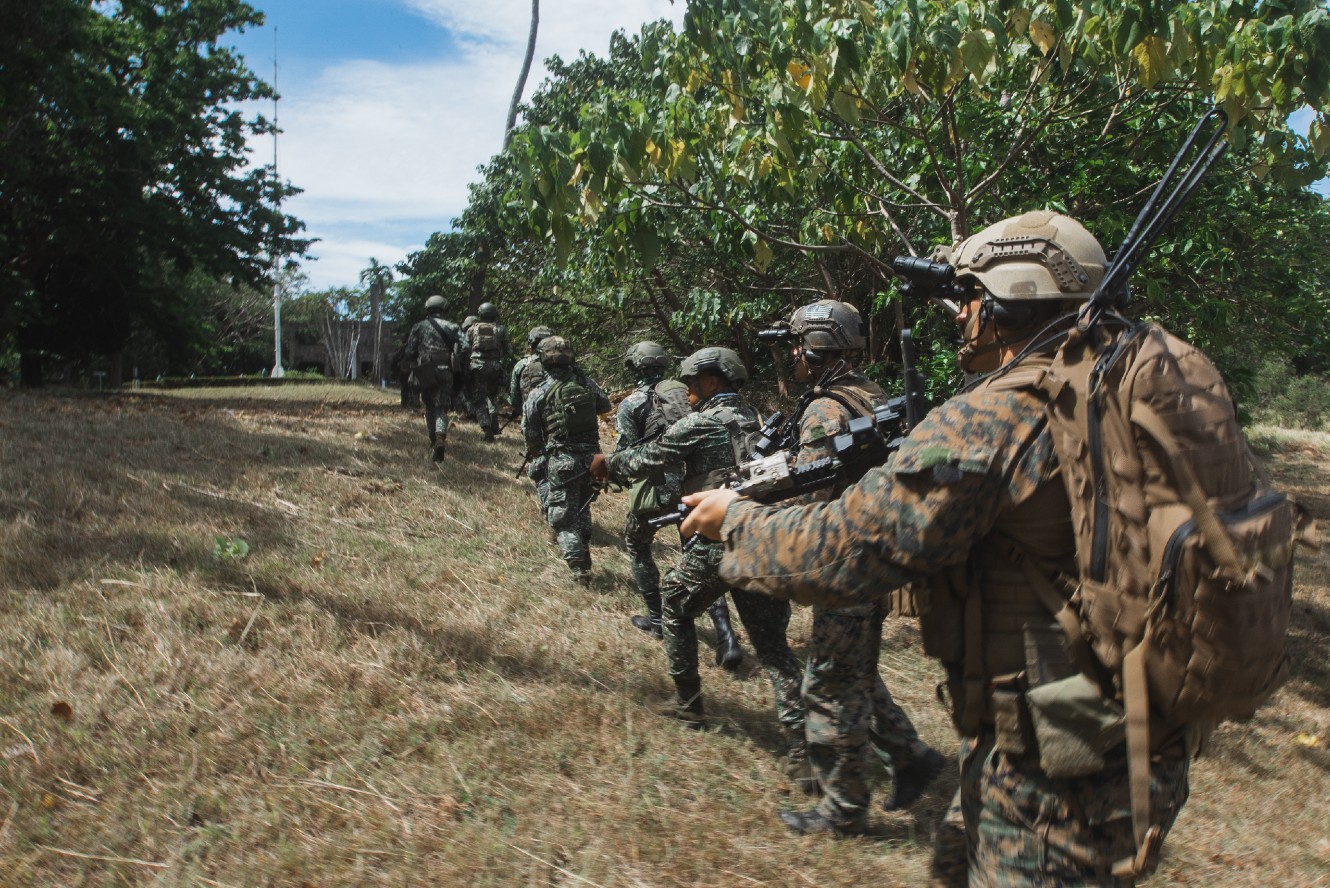(260) 06-18-2022-to-06-24-2022__****THE****WINDS****of****WAR****
(261) 06-25-2022-to-07-01-2022__****THE****WINDS****of****WAR****
(262) 07-23-2022-to-07-29-2022__****THE****WINDS****of****WAR****
 www.timebomb2000.com
www.timebomb2000.com
 www.timebomb2000.com
www.timebomb2000.com
 www.timebomb2000.com
www.timebomb2000.com
 www.timebomb2000.com
www.timebomb2000.com
 www.timebomb2000.com
www.timebomb2000.com
Posted for fair use.....
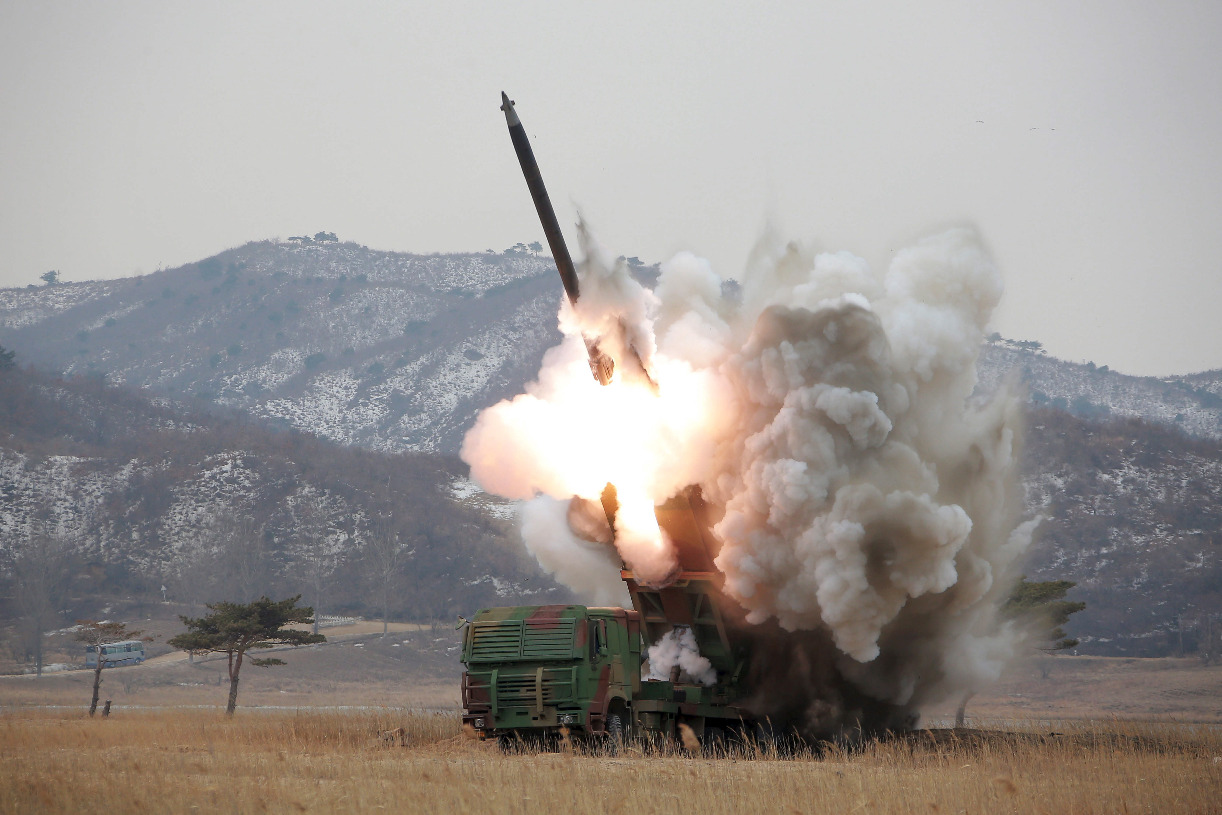
 nationalinterest.org
nationalinterest.org
July 30, 2022 Topic: Nuclear Proliferation Region: Asia Tags: Nuclear ProliferationRussia-Ukraine WarNuclear WeaponsUkraineJapanSouth KoreaTaiwanChinaNorth Korea
After Ukraine, Should East Asia Go Nuclear?
In the aftermath of the war in Ukraine, the future of the East Asian security order will likely be turbulent, and nuclear weapons are going to play an important role.
by Ramakrishna Pathanaboina Sanjeet Kashyap
ussia’s invasion of Ukraine has upended European geopolitics and marked the return of great power competition. However, the ramifications of the invasion will be global in scope as policymakers carefully learn from the Ukrainian experience. With the rise of China as a peer competitor to the United States and its recent aggressive turn towards military coercion, East Asian states have reason to worry.
The nuclear dimension of the war in Ukraine, in particular, is important because of the existential concern at stake. Chinese policymakers would certainly pay attention to U.S. reluctance to intervene militarily due to Russia’s nuclear arsenal. They might conclude that a conventional invasion of Taiwan—coupled with nuclear saber-rattling—will likewise prevent direct U.S. involvement in another regional conflict.
On the other hand, as many commentators have pointed out, the war has also revived the possibility of nuclear proliferation as smaller states recognize Ukraine’s mistake in giving up its inherited nuclear stockpile. Further, the failure of the United States and the United Kingdom to enforce the assurances of the 1994 Budapest Memorandum to protect Ukraine’s sovereignty has dented the credibility of great powers to shield their smaller allies against nuclear-armed rivals.
In this context, facing nuclear-armed adversaries in China and North Korea, East Asian states such as Japan, South Korea, and Taiwan might re-evaluate their decisions to forsake nuclear deterrence and rely solely on the U.S. security architecture. Today, the uncertain geopolitical environment in East Asia stems from China’s military advantages and increasingly aggressive intentions; the relative decline, domestic fracture, and entrapment of the United States in Europe; and a clear recognition of the Chinese threat in domestic public opinion surveys.
Despite the strength of the international nonproliferation regime, including economic sanctions and the possibility of preventive military action, security considerations dictate that East Asian states would do well to take the nuclear turn in the short to medium term.
Nuclear Deterrence and Non-Existential Threats
The utility of nuclear weapons in deterring existential threats is well-recognized. As Ukraine faces an existential threat from Russia today, the folly of abandoning its nukes has become clear. However, it is also true that the possession of nuclear weapons does not preclude conflict at the conventional and sub-conventional levels. Nuclear-armed states have historically faced aggression and even defeat at hands of non-nuclear weapons states. The limited utility of nuclear weapons in conventional conflicts then becomes the basis of the claim that the East Asian states should not pursue nuclear weapons.
While backed by the empirical record, this argument ignores the potential deterrence effect that nuclear weapons can have on conventional conflicts. In the case of a conventional conflict involving rival nuclear powers, the possibility of escalation to nuclear use cannot be ignored in making calculations at the conventional level. In this sense, the presence of nuclear deterrence can have a mollifying impact in preventing reckless aggression, even when conflict remains conventional. During the Cuban Missile Crisis, for instance, President John F. Kennedy was so worried by the prospect of inadvertent nuclear escalation that he sidelined hawkish officials and cautiously implemented the naval blockade of Cuba.
Further, the argument that there is no existential threat to East Asian states needs to be tested. In the case of Taiwan, there exists a clear existential threat in the form of conventionally superior and nuclear-armed China which threatens its territorial integrity. South Korea and Japan do not face the prospect of an imminent conventional invasion from a proximate superior adversary but both have to deal with two nuclear-armed adversaries, North Korea and China.
Hence, all three states inhabit an acute security environment which should make them consider the nuclear option to deter unwarranted aggression and coercion. China’s military modernization, bolstered by increased defense spending; the development of anti-access/area denial capabilities, new aircraft carriers, a blue water navy, and new nuclear silos; and the augmentation of cyber warfare capabilities, does not bode well for its neighbors. China is likely to use its conventional superiority to make an aggressive attempt at achieving regional hegemony.
Extended Deterrence and U.S. Credibility
The nuclear option for deterring China can work in two ways for East Asian states. The easier option is to continue extended deterrence under the U.S. nuclear umbrella. Japan and South Korea are treaty allies of the United States and have a guaranteed measure of protection in case of nuclear escalation. Taiwan’s relationship with the United States is governed by the Taiwan Relations Act which does not automatically warrant the use of nuclear weapons on the part of the United States to protect it. The second option for these states is to activate their own nuclear weapon programs and develop an independent deterrent. In the past, both Taiwan and South Korea have sought the bomb only to abandon their programs under U.S. pressure.
Continued.....
(261) 06-25-2022-to-07-01-2022__****THE****WINDS****of****WAR****
(262) 07-23-2022-to-07-29-2022__****THE****WINDS****of****WAR****
-----------------------------------
ALERT - RUSSIA INVADES UKRAINE - Consolidated Thread
the Kherson offensive has momentum View: https://twitter.com/DefenceHQ/status/1552526084821893120 If the Ukainians can win back this territory it could be a turning point in this year.
WAR - CHINA THREATENS TO INVADE TAIWAN
WAR - China Signals a Military Response to a Taiwan Visit by Pelosi
:hmm: View: https://mobile.twitter.com/dlscIosetv/status/1553441685002244098? Very, very, interesting. That might explain what I saw on ADS-B Exchange a few hour ago. I was looking for the speaker's plane inbound to Hawaii. Earlier reports said she was on a U.S. military Boeing C-40C. I did...
WAR - Regional conflict brewing in the Mediterranean
View: https://mobile.twitter.com/EndGameWW3/status/1547833862268469250?cxt=HHwWhICqvc2sgfsqAAAA
ALERT - The Winds of War Blow in Korea and The Far East
China Tried To Build Spy Network Inside The Fed, Threatened To Kidnap Fed Economist BY TYLER DURDEN ZERO HEDGE TUESDAY, JUL 26, 2022 - 10:45 AM China tried to place "a network of informants inside the Federal Reserve system" over the course of a decade, according to a stunning new article out...
-----------------------------------
Posted for fair use.....

After Ukraine, Should East Asia Go Nuclear?
In the aftermath of the war in Ukraine, the future of the East Asian security order will likely be turbulent, and nuclear weapons are going to play an important role.
July 30, 2022 Topic: Nuclear Proliferation Region: Asia Tags: Nuclear ProliferationRussia-Ukraine WarNuclear WeaponsUkraineJapanSouth KoreaTaiwanChinaNorth Korea
After Ukraine, Should East Asia Go Nuclear?
In the aftermath of the war in Ukraine, the future of the East Asian security order will likely be turbulent, and nuclear weapons are going to play an important role.
by Ramakrishna Pathanaboina Sanjeet Kashyap
ussia’s invasion of Ukraine has upended European geopolitics and marked the return of great power competition. However, the ramifications of the invasion will be global in scope as policymakers carefully learn from the Ukrainian experience. With the rise of China as a peer competitor to the United States and its recent aggressive turn towards military coercion, East Asian states have reason to worry.
The nuclear dimension of the war in Ukraine, in particular, is important because of the existential concern at stake. Chinese policymakers would certainly pay attention to U.S. reluctance to intervene militarily due to Russia’s nuclear arsenal. They might conclude that a conventional invasion of Taiwan—coupled with nuclear saber-rattling—will likewise prevent direct U.S. involvement in another regional conflict.
On the other hand, as many commentators have pointed out, the war has also revived the possibility of nuclear proliferation as smaller states recognize Ukraine’s mistake in giving up its inherited nuclear stockpile. Further, the failure of the United States and the United Kingdom to enforce the assurances of the 1994 Budapest Memorandum to protect Ukraine’s sovereignty has dented the credibility of great powers to shield their smaller allies against nuclear-armed rivals.
In this context, facing nuclear-armed adversaries in China and North Korea, East Asian states such as Japan, South Korea, and Taiwan might re-evaluate their decisions to forsake nuclear deterrence and rely solely on the U.S. security architecture. Today, the uncertain geopolitical environment in East Asia stems from China’s military advantages and increasingly aggressive intentions; the relative decline, domestic fracture, and entrapment of the United States in Europe; and a clear recognition of the Chinese threat in domestic public opinion surveys.
Despite the strength of the international nonproliferation regime, including economic sanctions and the possibility of preventive military action, security considerations dictate that East Asian states would do well to take the nuclear turn in the short to medium term.
Nuclear Deterrence and Non-Existential Threats
The utility of nuclear weapons in deterring existential threats is well-recognized. As Ukraine faces an existential threat from Russia today, the folly of abandoning its nukes has become clear. However, it is also true that the possession of nuclear weapons does not preclude conflict at the conventional and sub-conventional levels. Nuclear-armed states have historically faced aggression and even defeat at hands of non-nuclear weapons states. The limited utility of nuclear weapons in conventional conflicts then becomes the basis of the claim that the East Asian states should not pursue nuclear weapons.
While backed by the empirical record, this argument ignores the potential deterrence effect that nuclear weapons can have on conventional conflicts. In the case of a conventional conflict involving rival nuclear powers, the possibility of escalation to nuclear use cannot be ignored in making calculations at the conventional level. In this sense, the presence of nuclear deterrence can have a mollifying impact in preventing reckless aggression, even when conflict remains conventional. During the Cuban Missile Crisis, for instance, President John F. Kennedy was so worried by the prospect of inadvertent nuclear escalation that he sidelined hawkish officials and cautiously implemented the naval blockade of Cuba.
Further, the argument that there is no existential threat to East Asian states needs to be tested. In the case of Taiwan, there exists a clear existential threat in the form of conventionally superior and nuclear-armed China which threatens its territorial integrity. South Korea and Japan do not face the prospect of an imminent conventional invasion from a proximate superior adversary but both have to deal with two nuclear-armed adversaries, North Korea and China.
Hence, all three states inhabit an acute security environment which should make them consider the nuclear option to deter unwarranted aggression and coercion. China’s military modernization, bolstered by increased defense spending; the development of anti-access/area denial capabilities, new aircraft carriers, a blue water navy, and new nuclear silos; and the augmentation of cyber warfare capabilities, does not bode well for its neighbors. China is likely to use its conventional superiority to make an aggressive attempt at achieving regional hegemony.
Extended Deterrence and U.S. Credibility
The nuclear option for deterring China can work in two ways for East Asian states. The easier option is to continue extended deterrence under the U.S. nuclear umbrella. Japan and South Korea are treaty allies of the United States and have a guaranteed measure of protection in case of nuclear escalation. Taiwan’s relationship with the United States is governed by the Taiwan Relations Act which does not automatically warrant the use of nuclear weapons on the part of the United States to protect it. The second option for these states is to activate their own nuclear weapon programs and develop an independent deterrent. In the past, both Taiwan and South Korea have sought the bomb only to abandon their programs under U.S. pressure.
Continued.....
Last edited:

